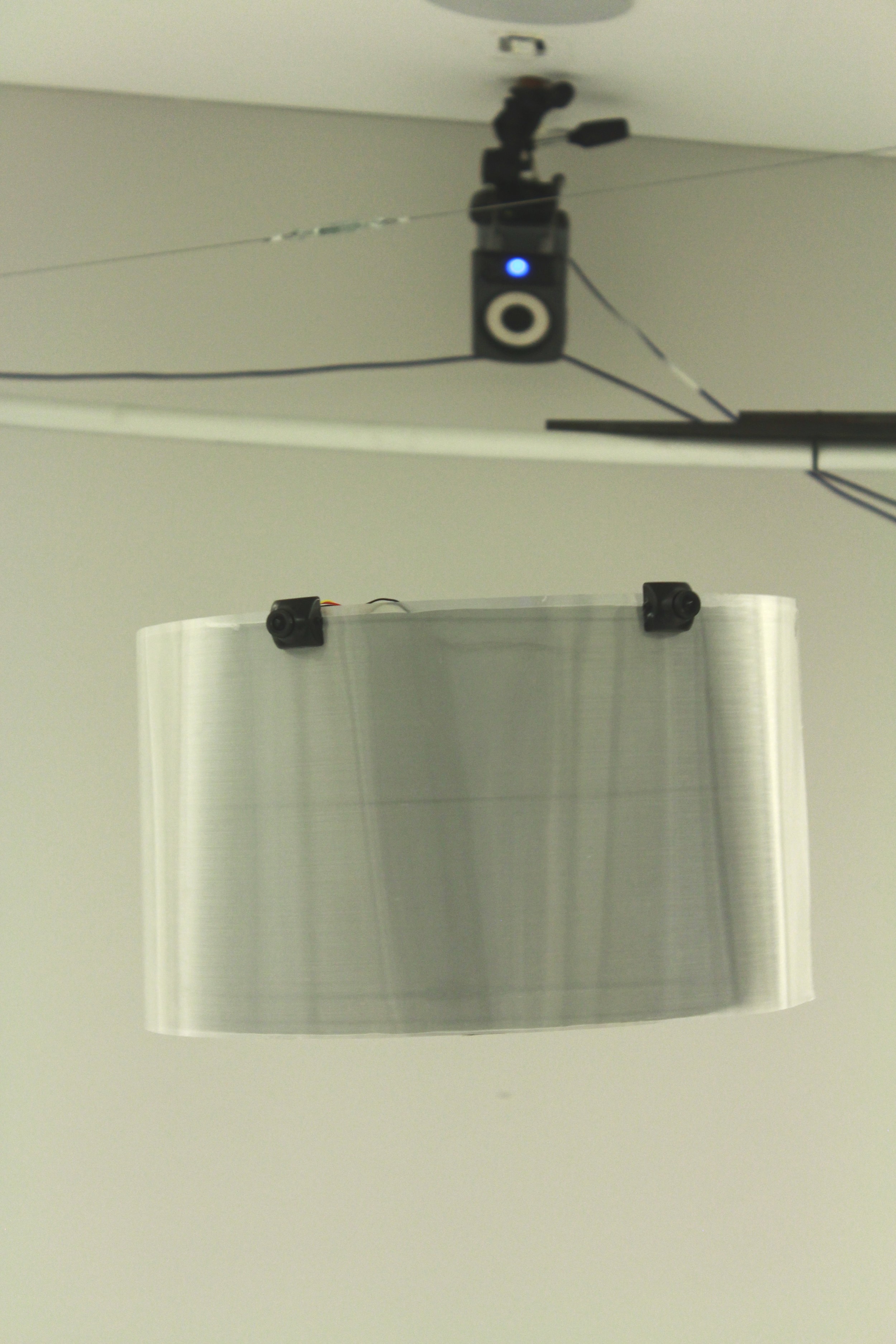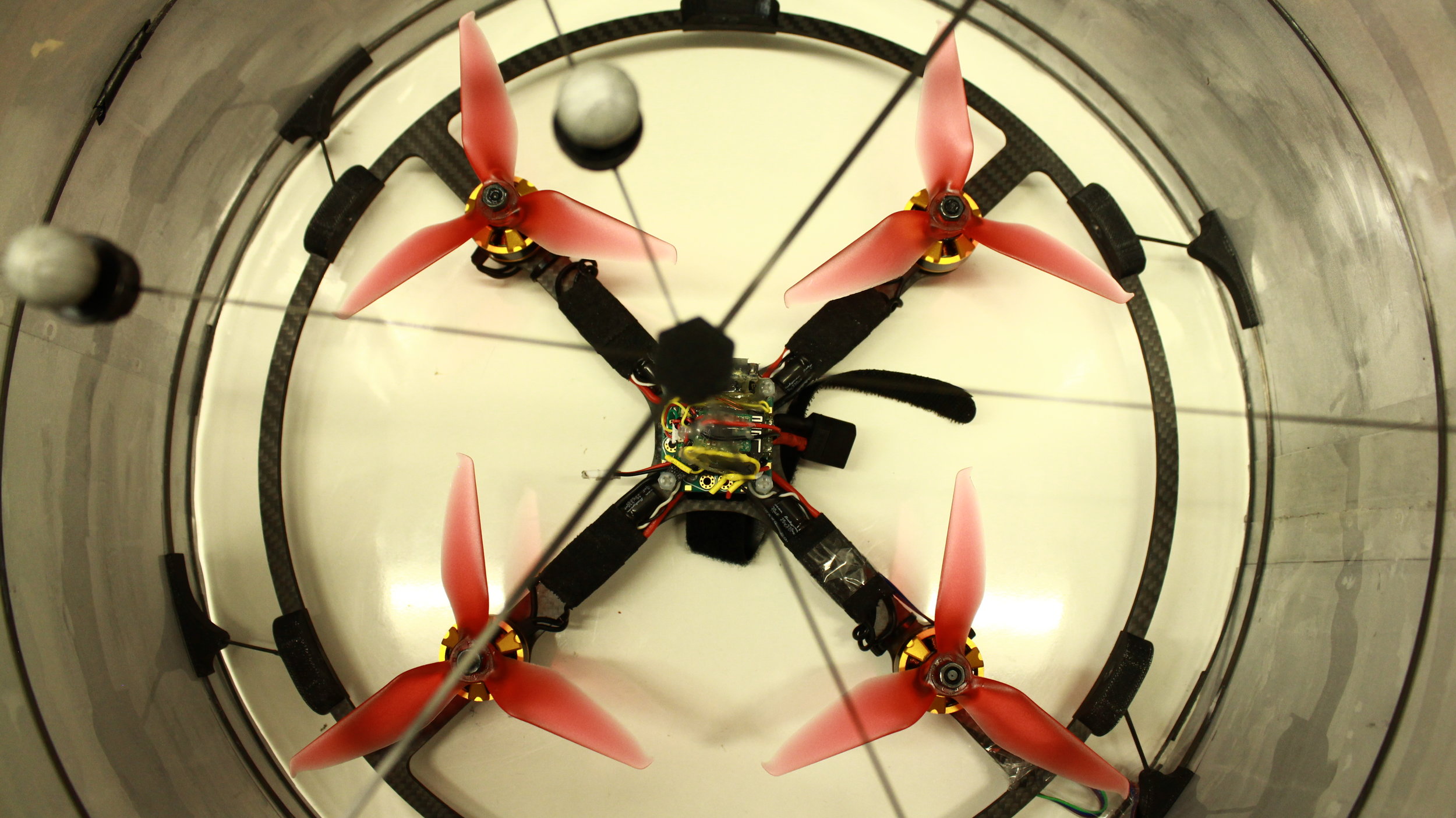(Note that the flicker in the video is due to the interaction of the camera shutter with the 45 projector shutters, and is not visible to users)
Projected self-levitating light field display allows users to hover in remote places
GLASGOW – This week, Human Media Lab researchers will unveil LightBee - the world’s first holographic drone display. LightBee allows people to project themselves into another location as a flying hologram using a drone that mimics their head movements in 3D - as if they were in the room.
“Virtual Reality allows avatars to appear elsewhere in 3D, but they are not physical and cannot move through the physical space” says Roel Vertegaal, Director of the Human Media Lab. “Teleconferencing robots alleviate this issue, but cannot always traverse obstacles. With LightBee, we're bringing actual holograms to physical robots that are not bound by gravity.”
With LightBee, a person’s head and head movements are captured using 3D video cameras. In the remote space, a drone with a cylindrical projection surface flies within a ring of 45 smart projectors. A lightfield, or hologram, is projected onto the retroreflective surface of the drone, making the head appear in 3D as if existing inside the drone. The hologram can be walked around and viewed from all sides simultaneously by multiple users in the remote space - much like Star War’s Princess Leia, or the LightBee hologram in the British Sci-Fi show “Red Dwarf”, after which the system was named. LightBee physically teleports 3D images of a human head from one place to another, while giving the person the ability to move and look around in the remote 3D space. Because the drone projects a light field with one image for every degree of angle, remote viewers of the drone need not wear a headset or 3D glasses to experience the other person in full 3D augmented reality.
“Face-to-face interaction transfers an immense amount of non-verbal information,” says Dr. Vertegaal, “This information is lost in online tools. Users miss the proxemics, gestures, facial expressions, and eye contact that bring nuance, emotion to a conversation. LightBee injects these missing elements into long-distance conversations with a realism that cannot be achieved with a Skype or Facetime video chat.”
“For example, LightBee allows users to experience social proxemics and a physical presence of the other person that seems more real,” says Dr. Merritt. “This eases multiparty turntaking as well as the effectiveness of the meeting.” The system also has more frivolous applications. “At a large music festival, a DJ can appear simultaneously in multiple places around the statidum as a flying hologram. “ Although propeller noise is still an issue with the current prototype, Dr. Merritt expects this to be mitigated with future prototypes, for example, by using ultrasonic propeller technology.
LightBee will be presented to the general public at the ACM CHI Conference on Human Factors in Computing Systems, the premier international conference on Human-Computer Interaction, in Glasgow, United Kingdom on May 9th, 2019.
References
Xujing Zhang, Sean Braley, Calvin Rubens, Timothy Merritt and Roel Vertegaal. 2019. LightBee: A Self-Levitating Light Field Display for Hologrammatic Telepresence.In 2019 CHI Conference on Human Factors in Computing Systems Proceedings (CHI 2019), May 4–9, 2019, Glasgow, Scotland, UK. ACM, New York, NY, USA. 11 pages. [PDF]
Media Contact
Please send enquiries to roel@acm.org
Media Footage
High resolution photographs are available rights-free by clicking the thumbnails below. Please include a photo credit to Human Media Lab. A YouTube video is available here.



